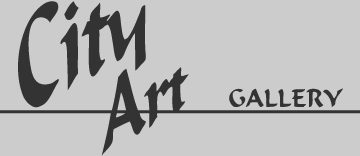Click any image to enlarge and view actual size.
Louis St. Lewis
(1961-2021)
Louis St.Lewis was a compelling artist from Chapel Hill, North Carolina who gained considerable exposure and recognition for a wide range of creative endeavors including painting, sculpture and collage. St. Lewis had a fascination for the past and his work generally plays off classic Greek and Roman themes, or early 19th century images which he subverts and updates to address a range of contemporary issues. His style is an eclectic mix of expressionism and pop, figuration and abstraction, narrative and decoration - combining fragments of diverse source material which, when removed from their original context and placed within his work, take on new, often symbolic meaning.
St. Lewis recognized that to understand the present, you must know the past. His works are a pointed reminder that myths are the stories of our quest through the ages for meaning and truth; and that mythology can provide clues to the problems and issues we face as a society today. For St. Lewis, mythology was the guidepost in his own search for answers; and while each work makes clear reference to the source from which they are drawn, the stories are re-scripted to satisfy his own fantasies and interests.
“I quickly realized that St. Lewis is one of those individuals whose work doesn’t stop at the edge of the canvas, so to speak. Instead, it infuses all aspects of his life, from the way he talks to the way he dresses to the way he decorates his environment where he lives and works. On one level, he’s a performance artist for whom the performance never ends, and his individual paintings, collages and assemblages are props and pieces of the constantly evolving stage set that his studio and the world-at-large comprise for him.” -Tom Patterson, Artpapers
The artworks of Louis St. Lewis are found in the permanent collections of several prominent museums, as well as in numerous private collections worldwide
St. Lewis worked in églomisé and collage. Églomisé is a French term referring to the process of applying both a design and gilding onto the rear face of glass to produce a mirror finish. It’s can be a relatively simple technique of applying decorative designs in a combination of plain color and gilding, usually to glass picture frames.
In the gilding process, the silver, gold or other metal leaf is fixed using a gelatin adhesive which, after steaming, results in a mirror-like, reflective finish. The design can be applied by various techniques, often by reverse painting prior to gilding, or by engraving the design into the gilded layer, or even into the glass. When painting an elaborate design such as a flower, the artist's natural methodology is reversed, with highlights applied first and the background applied last. The metal leaf may also be applied using oil-based adhesives to achieve a matte finish. It is to be distinguished from "sandwiched" gold glass where gold leaf is glued to a piece of glass, and often then scraped off to form a design, and a further layer of hot glass is then applied on top and fused to seal the gold inside. Nowadays, there are very few artists using the technique as a fine art.
St. Lewis always started his work on clean clear glass which he then decorated on the reverse and mirrored from scratch utilizing layers of metallic powders and resins.
His collage work consists of a mix of pop and classical image cut up and sandwiched between sheets of glass. Touched up with paint and displayed in ornate frames they have, thanks to their layers, more gloss and depth than most collages. The glass collages are mostly photographic portraits made on acetate layered over glass with St. Lewis incorporating layers of images such as florals, butterflies, visual quotes from classical paintings and even dollar bills. He manipulates each image separately to achieve varying emotional shadings. This image repetition is a Warholian concept, but St.Lewis works each image carefully, by hand, with a completely different intent. These devotional collages are consistently St.Lewis best crafted, most cogent, easy-to-take works.


